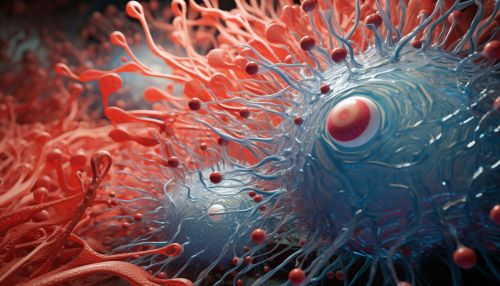Host-pathogen interaction
Introduction
Host-pathogen interaction is a complex relationship between an organism (the host) and the microorganism (the pathogen) that invades it. This interaction is a critical aspect of microbiology, immunology, and infectious diseases. The outcome of this interaction can result in a range of conditions from asymptomatic carriage to severe disease and death.


Host Defense Mechanisms
The host has an array of defense mechanisms to combat pathogen invasion. These include physical barriers, such as the skin and mucous membranes, and immune responses, both innate and adaptive. The innate immune response is the first line of defense and is non-specific, while the adaptive immune response is specific to the pathogen and has memory.
Pathogen Invasion Strategies
Pathogens have developed various strategies to invade the host and evade its defenses. These include attachment to host cells, invasion of host tissues, evasion of host defenses, and damage to the host.
Attachment and Invasion
Pathogens must first attach to host cells to establish infection. They do this through specific interactions between pathogen and host cell surface molecules, known as adhesins and receptors, respectively. Following attachment, some pathogens can invade host cells, either by inducing the host cell to engulf them or by actively penetrating the host cell.
Evasion of Host Defenses
Pathogens have evolved mechanisms to evade host defenses. Some pathogens can avoid detection by the immune system by altering their surface molecules. Others can survive inside host cells, where they are protected from immune responses. Some pathogens can even manipulate the host immune response to their advantage.
Damage to the Host
Pathogens can cause damage to the host directly, through the production of toxins, or indirectly, through the induction of an excessive or inappropriate immune response. The extent and type of damage can vary widely, depending on the pathogen and the host.
Host-Pathogen Coevolution
The interaction between hosts and pathogens is a dynamic process, with both sides continually evolving in response to each other. This coevolution can lead to a range of outcomes, from the elimination of the pathogen by the host, to the establishment of a long-term relationship between the two.
Conclusion
Understanding host-pathogen interactions is crucial for the development of new strategies to prevent and treat infectious diseases. Advances in technology and research methods are providing new insights into these complex interactions, with the potential to revolutionize our approach to infectious diseases.
